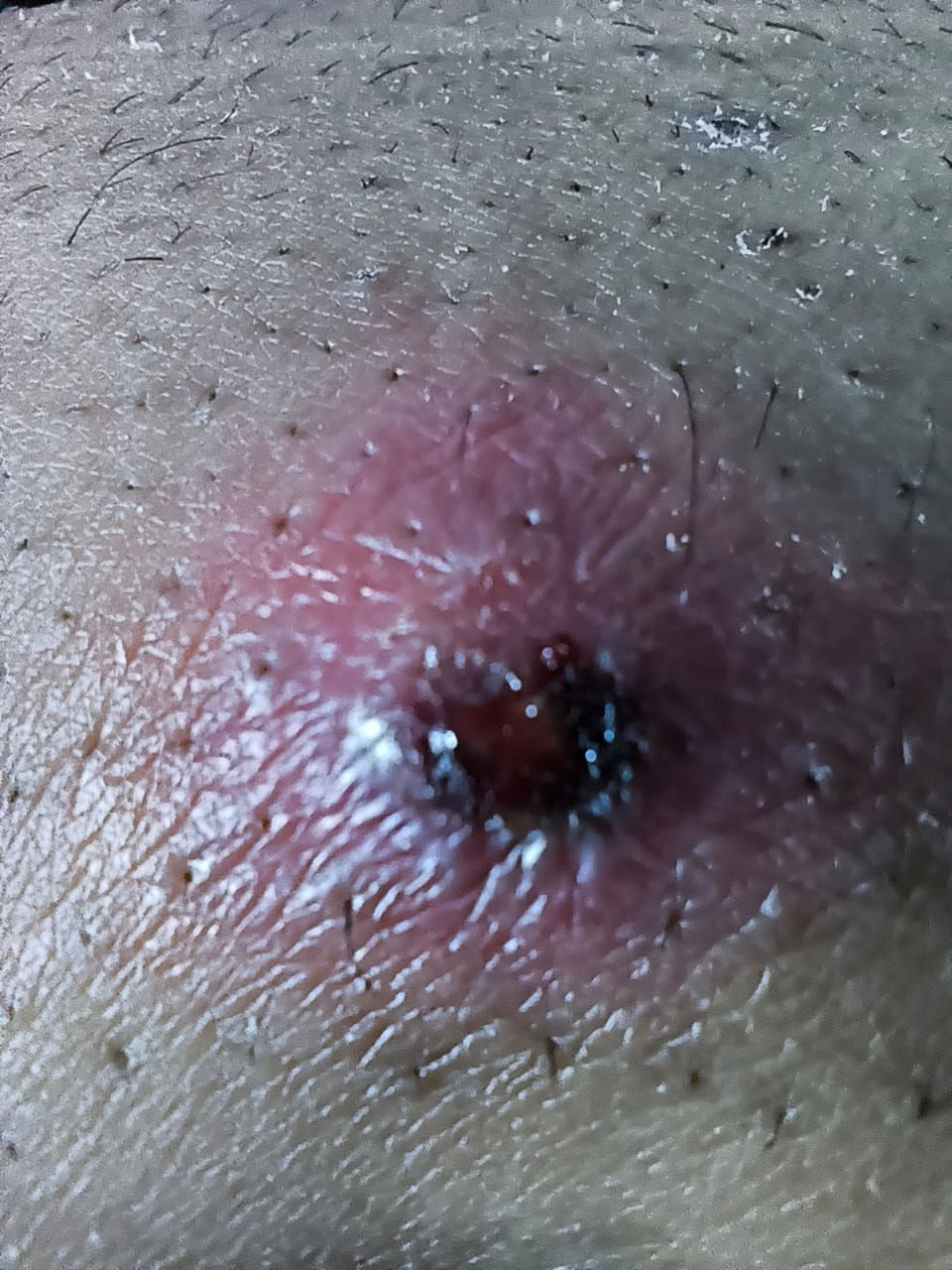Unmasking the Silent Threat: Understanding and Preventing Scrub Typhus
- DR Dinesh Vats
- May 31
- 3 min read
Updated: Jul 23
Have you ever heard of Scrub Typhus? While it might not always grab headlines like malaria or dengue, this infectious disease is a significant health concern, especially in rural and semi-rural areas across Asia, including India. Often tricky to diagnose due to its general symptoms, Scrub Typhus can lead to serious complications if not treated promptly.
So, what exactly is Scrub Typhus, and how can we protect ourselves and our communities? Let's uncover the facts.
What is Scrub Typhus?
Scrub Typhus is caused by the bacterium Orientia tsutsugamushi. It's transmitted to humans through the bite of infected larval mites, commonly known as chiggers or trombiculid mites. These minuscule mites thrive in areas with dense vegetation, scrubland, forests, and even overgrown gardens – hence the name "scrub" typhus.
Where is Scrub Typhus Found? (The Tsutsugamushi Triangle)
Scrub Typhus is endemic to a vast geographical area known as the "Tsutsugamushi Triangle." This expansive region stretches from northern Japan and eastern Russia, across Southeast Asia (including India), and down to northern Australia and westward to Pakistan. Covering over 8 million square kilometres, the Tsutsugamushi Triangle represents the primary zone where environmental conditions are ideal for the mite vectors and the Orientia tsutsugamushi bacteria to flourish.
Within India, cases are reported from various states, particularly after the monsoons when mite populations tend to swell. Notably, Himachal Pradesh is a well-known endemic area for Scrub Typhus, experiencing recurrent outbreaks, especially during and after the rainy season.
Key Symptoms to Watch Out For
Symptoms of Scrub Typhus typically appear 6 to 21 days after an infected mite bite. They can be non-specific, making early diagnosis challenging. Common signs include:
Fever: Often high-grade and persistent.
Headache: Usually severe and throbbing.
Body Aches and Muscle Pain (Myalgia): Generalized discomfort.
Rash: A characteristic rash may develop a few days after the fever begins. It can be flat red spots (macular) or slightly raised red spots (maculopapular) and often spreads from the torso to the limbs.
Eschar: A distinctive, painless, dark, scab-like lesion at the site of the mite bite is a hallmark sign. While highly indicative, it may not always be present or easily found.

Image 1. Showing Eschar in patient with Scrub typhus. Lymphadenopathy: Swollen lymph nodes, particularly near the bite site.
Gastrointestinal Issues: Nausea, vomiting, and abdominal pain can also occur.
In severe cases, Scrub Typhus can impact multiple organs, leading to complications such as pneumonia, myocarditis (heart muscle inflammation), encephalitis (brain inflammation), kidney failure, and even multi-organ failure, which can unfortunately be fatal.
Diagnosis and Effective Treatment
Diagnosing Scrub Typhus relies on a combination of clinical suspicion, understanding the patient's exposure history (e.g., recent travel to endemic areas or contact with mite-infested environments), and laboratory tests. Blood tests, such as serological tests (e.g., IgM ELISA) that detect antibodies against Orientia tsutsugamushi, are commonly used for confirmation.
The good news is that Scrub Typhus is highly treatable with antibiotics. Doxycycline is the preferred medication and is very effective when given early in the illness. Azithromycin serves as an alternative, particularly for pregnant women and young children. Prompt diagnosis and treatment are absolutely critical to prevent severe complications and ensure a full recovery.

Preventing Scrub Typhus: Your Best Defense!
As there is currently no vaccine available for Scrub Typhus, prevention is your most powerful tool. Here are essential tips to protect yourself and your family:
Avoid Mite-Infested Areas: When possible, steer clear of dense scrub, tall grasses, bushy areas, and forest edges, especially during peak transmission seasons (often after monsoons in India).
Wear Protective Clothing: When outdoors in vegetated areas, wear long-sleeved shirts, long pants, and socks. Tuck your pants into your socks or boots to create a barrier against mites.
Use Insect Repellents: Apply EPA-registered insect repellents containing DEET or permethrin to exposed skin and clothing. Always follow product instructions carefully.
Treat Clothing and Gear: Permethrin can be used to treat clothing, boots, and camping gear for enhanced protection. Do not apply permethrin directly to the skin.
Check for Mites: After spending time outdoors, thoroughly inspect your body, clothing, and gear for chiggers. They are tiny, so a magnifying glass can be helpful. Pay close attention to areas like ankles, wrists, waistline, and skin folds.
Shower After Outdoor Activities: Showering soon after coming indoors can help wash off any unattached mites.
Maintain Your Surroundings: Clear bushes and tall grasses around your home and garden to reduce potential mite habitats.
Don't Underestimate This "Silent Threat"
Scrub Typhus might be a "silent threat," but by understanding its symptoms, knowing how it's transmitted, and consistently practicing preventive measures, we can significantly reduce our risk. If you experience symptoms like persistent fever, headache, body aches, and especially if you notice an eschar, and have a history of exposure to mite-prone environments, seek medical attention immediately. Early diagnosis saves lives!
Stay informed, stay safe, and stay healthy!

Very informative 🫡